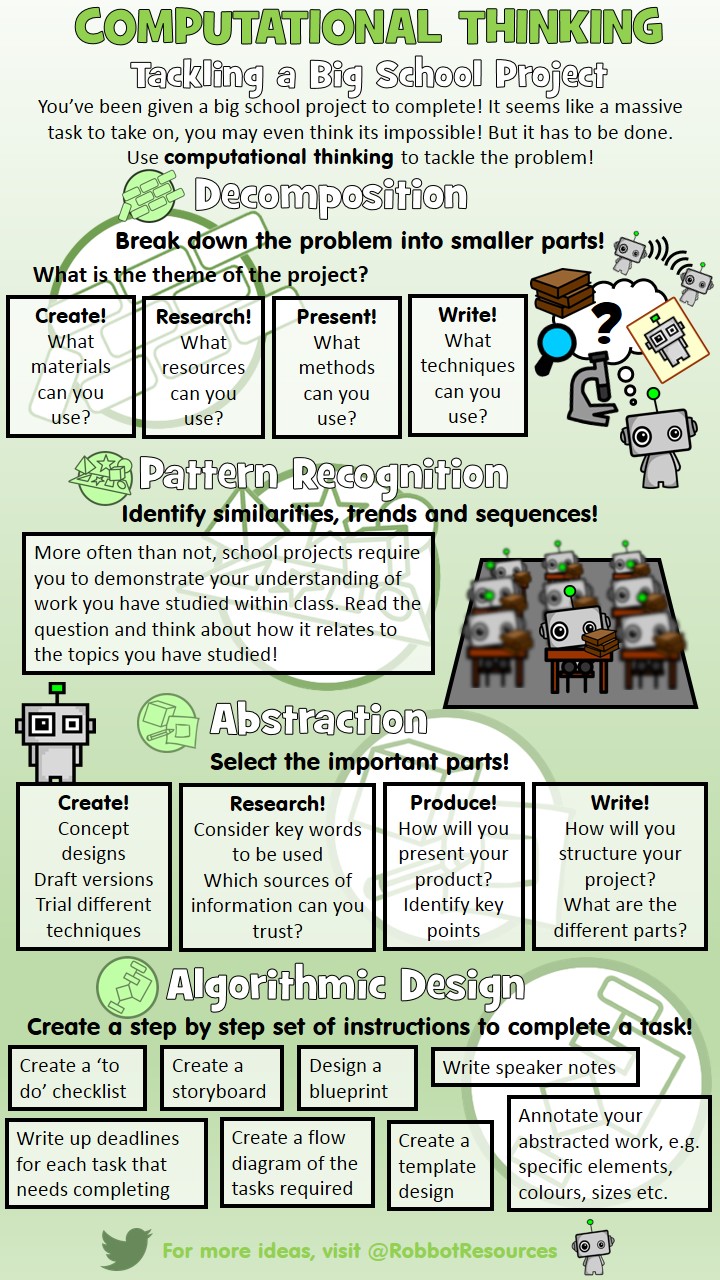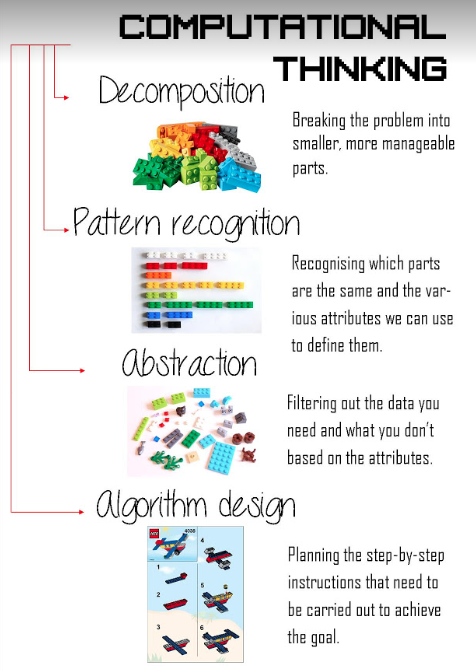
Decomposition

Overview
Computational thinking assists students to break down problems into smaller parts so that it is easier to understand and solve them. In all disciplines, students have problems to solve. Learning to use decomposition, pattern recognition, abstraction and algorithm design will help students reach success in all projects. Students can use computational thinking while working on a school project to coding and programming a game. The terms are difficult for a 2nd grader to learn, but they should begin learning the main concepts of computational thinking. In this task card, the focus will be on decomposition.

Created by Jo Culf.
Learning Objectives
Students will:
- Be able to break down a problem into small chunks.
- Understand the first step of computational thinking.
Vocabulary
Vocabulary Words:
- Decomposition: Decomposition is breaking something into smaller chunks or steps.
Pre-planning
To prepare for this lesson:
-
Download the Computational Thinking poster to better understand decomposition Tackling a Big School Project.
-
Watch the Computational Thinking Video.
-
Watch the Introduction to Decomposition video.
-
Decide what problem the students will break into steps. For example, making a pizza, baking a cake, and building a robot.
Accommodations
See Accommodations Page and Charts on the 21things4students.net site in the Teacher Resources.
Steps
Directions for this activity:
- The teacher will introduce computional thinking to the class. Explain that computational thinking is a way to understand and solve problems.
- The teacher will introduce the term decompose to the students and explain that decomposition is to break a problem into chunks or steps to solve it.
- The teacher will give the students a problem to solve. Students should answer questions like:
- What is the ultimate goal?
- What kind of materials are needed?
- What are the steps needed to complete the task?
- How might the steps be completed?
- Students will work in groups to come up with the materials and steps needed to complete the task.
- Students will write the steps out and share with the rest of the class.
- The teacher will explain that they just decomposed or broke a problem into steps.
Extensions:
- Students will brainstorm other problems to solve and steps that are needed to solve or complete the task.
- Students will have a puzzle to solve with a partner.
Assessment Options
Different options for assessing the students:
- Observations
- Check for understanding
- Create a simple rubric for students to help them in the decomposition process.
MITECS COmpetencies & ISTE STANDARDS
MITECS: Michigan adopted the "ISTE Standards for Students" called MITECS (Michigan Integrated Technology Competencies for Students) in 2018.
Computational Thinker
5a. Students formulate problem definitions suited for technology-assisted methods such as data analysis, abstract models and algorithmic thinking in exploring and finding solutions.
5c. Students break problems into component parts, extract key information, and develop descriptive models to understand complex systems or facilitate problem-solving.
Devices and Resources
Device: PC, Chromebook, Mac, iPad
Browser: Chrome, Safari, Firefox, Edge, ALL
Websites:
Computational Thinking Video
Decomposition in the Classroom Video
CONTENT AREA RESOURCES
ELA
- Students decompose a riddle.
- Students decompose a short story to better understand it.
Math
Students solve math story problems.
Science
Students solve experiments.
Social Studies
Students take a historical event and break down the event into chunks or a timeline.
CREDITS
This task card was created by Melissa White, REMC Association of Michigan, February 2018.


